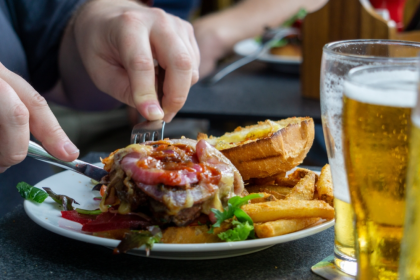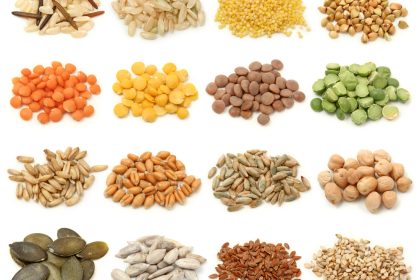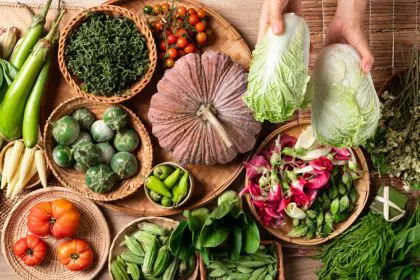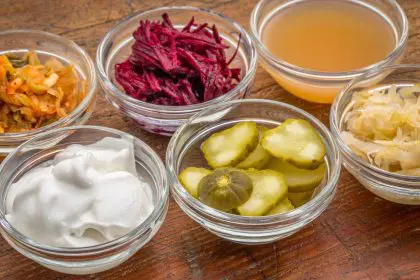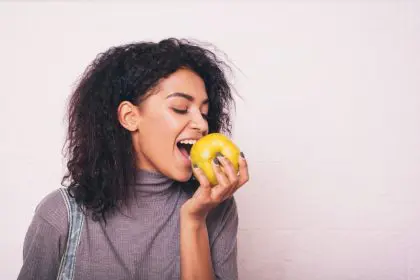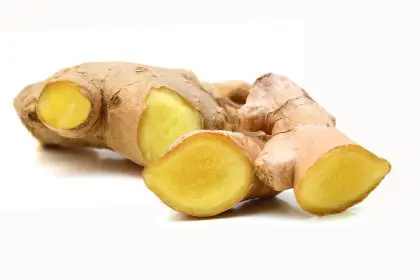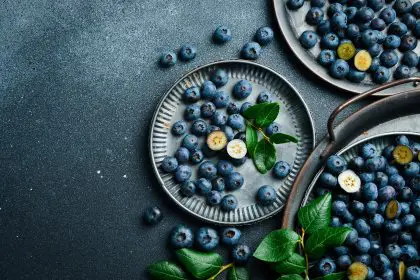Ever wonder why you’re popping all those vitamins but still feeling blah? The secret to actually getting nutrients into your bloodstream isn’t about eating more superfoods—it’s about eating the right foods together. Turns out your body is pretty picky about company.
Why your body is ghosting your nutrients
Here’s the frustrating truth about nutrition that food labels don’t tell you—just because something contains nutrients doesn’t mean your body can actually use them. Spinach might be loaded with iron, but your body might only absorb a tiny fraction of it.
Think of it like trying to enter an exclusive club. Some nutrients waltz right through the velvet rope of your intestinal wall, while others get turned away at the door without the right companion. This nutritional phenomenon is called bioavailability, and it’s why some strange food pairings can dramatically boost what your body actually absorbs.
Your digestive system has preferences and prejudices you’ve never even considered. Some nutrients need fat to be absorbed. Others need specific enzymes to be activated. And some are just showoffs that block the absorption of their nutrient neighbors.
Iron-clad combinations that actually work
Iron deficiency is ridiculously common, especially among women. You can eat spinach until you’re green in the face, but plant-based iron (called non-heme iron) is notoriously difficult for your body to absorb. The solution? Pair it with vitamin C.
Squeezing lemon over your spinach salad isn’t just for flavor—it can triple iron absorption. That’s because vitamin C converts iron into a form your body can more easily use. Other winning combinations include bell peppers in your bean chili or strawberries with your oatmeal.
But wait, there’s a plot twist. If you wash down your iron-rich meal with coffee or tea, you’re essentially undoing all your hard work. The tannins in these beverages bind to iron and escort it right out of your body. The fix? Wait at least an hour between your iron-rich meal and your caffeine fix.
The fat-soluble four need a fat friend
Vitamins A, D, E, and K are the divas of the nutrient world—they refuse to be absorbed without fat present. This is why eating a fat-free salad with carrots (vitamin A) and leafy greens (vitamin K) is basically just expensive chewing.
Adding avocado to your salad isn’t calorie splurging—it’s nutrient optimization. That drizzle of olive oil isn’t just for flavor—it’s your absorption insurance policy. Even a sprinkle of nuts or seeds can make the difference between nutrients passing through or moving in.
One study found that people who ate salads with fat-free dressing absorbed virtually none of the carotenoids from the vegetables. Add just a moderate amount of fat, and absorption skyrocketed by over 400%. This explains why the Mediterranean diet, with its liberal use of olive oil, is associated with such positive health outcomes—they’re actually absorbing their nutrients.
Turmeric needs its partner in crime
Turmeric has been hailed as a miracle spice for fighting inflammation, but most people are using it wrong. Curcumin, the active compound in turmeric, has abysmal bioavailability on its own. Your body simply doesn’t absorb much of it when it’s flying solo.
The game-changing hack? Always pair turmeric with black pepper. A compound in black pepper called piperine can increase curcumin absorption by a staggering 2,000%. That’s not a typo—two thousand percent. This explains why traditional cuisines that use turmeric, like Indian food, almost always include black pepper in the same dishes.
For maximum benefit, add a tiny pinch of black pepper to your turmeric latte, golden milk, or curry dishes. And remember that fat helps too, so coconut milk or a drizzle of olive oil creates the perfect absorption trinity.
Calcium’s complicated relationship status
Dairy ads have drilled the calcium message into our heads, but they conveniently leave out that calcium needs vitamin D to actually make it into your bones. Without adequate vitamin D, that glass of milk does surprisingly little for your skeleton.
This is why traditional food pairings like salmon with cream sauce or eggs with cheese make nutritional sense—they naturally combine calcium with vitamin D-rich foods. Even something as simple as drinking your milk outside where your skin can synthesize vitamin D from sunlight follows this principle.
The calcium story gets even more interesting when you consider its complicated relationship with iron. These two minerals compete for absorption, which is why washing down an iron supplement with milk is counterproductive. Space calcium-rich foods and iron-rich foods at least two hours apart for maximum absorption of both.
The protein-zinc connection
Zinc is crucial for immune function, testosterone production, and wound healing, but plant sources of zinc come with their own absorption challenges. Whole grains, legumes, nuts, and seeds contain compounds called phytates that bind to zinc and prevent absorption.
The hack? Pair plant zinc sources with protein. Animal proteins in particular help release zinc from its phytate prison. This is why traditional hummus with its combination of chickpeas (zinc with phytates) and tahini (protein) makes more nutritional sense than eating either alone.
Fermentation is another zinc-liberation strategy. Sourdough bread, tempeh, and miso all have enhanced zinc bioavailability compared to their unfermented counterparts. This explains why traditional diets often fermented grains and legumes—our ancestors knew what they were doing.
Tomatoes and olive oil—a Mediterranean matchmaking success
Tomatoes are rich in lycopene, a powerful antioxidant linked to prostate health and reduced cancer risk. But raw tomatoes actually offer very little absorbable lycopene. The secret? Cooking tomatoes in olive oil.
Heat breaks down the cell walls of tomatoes, releasing more lycopene, while the fat in olive oil shuttles it into your bloodstream. This Mediterranean pairing increases lycopene absorption by up to 400%. Suddenly, pizza with olive oil doesn’t sound so nutritionally reckless, does it?
This same principle applies to other carotenoid-rich vegetables like carrots, sweet potatoes, and bell peppers. Roasting them with a drizzle of olive oil isn’t just delicious—it’s nutritionally strategic.
Start your food matchmaking adventure
Ready to play nutritional matchmaker with your meals? Start small. Add vitamin C-rich bell peppers to your black bean tacos. Sprinkle black pepper on anything with turmeric. Never eat a salad without some form of healthy fat.
These simple pairings don’t require fancy ingredients or complicated recipes—just a basic understanding of which nutrients play well together. Your body will thank you by actually using the nutrients you’re providing instead of just letting them pass through.
Remember, it’s not just about what you eat—it’s about what you absorb. And in the world of nutrient absorption, sometimes the strangest couples have the happiest endings.



